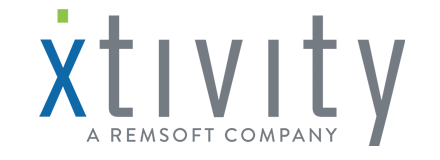In the manufacturing industry there are many costs that are analyzed, scrutinized, and minimized. However, the most important cost often goes neglected. The Total Cost of Ownership represents the total of all costs related to a product, from purchase to usage to disposal. While managing this cost is a robust task, failing to account for the total costs of ownership can lead to poor business decision that will ultimately increase the bottom line and decrease profitability.
To be able to clearly understand the total cost of ownership and how it affects the business it should be broken down into a collection of segments. Purchase Price, Acquisition Cost, Insurance Cost, Disposal Cost, and Opportunity Costs. These segments not only reflect the manufacturing process, but also everything from purchasing and maintaining, to storing and administration.
Possibly the highest contributor to the total cost of ownership is a bloated inventory. Now some of you are thinking that this problem doesn’t exist in your plant. In our experience, inventory bloating in the MRO space does not discriminate based on the industry, the size of your organization, or the location of your company. It affects everyone! A bloated inventory has many ways that it negatively impacts an organization. First off, the excess inventory has to be ordered which creates two costs. The administration costs as well as the initial capital. Secondly, this inventory needs to be managed, maintained, and insured while it is in your storeroom – All costing your company money. Lastly, if you are lucky there may be a chance to recover some of your initial investment at pennies on the dollar, but realistically you are going to incur a high cost to dispose of this material.
Now that we have identified a major problem that most certainly exists in your operation let’s look at some different solutions that are available. First off we will start with vendor managed inventory. At face value these programs look fantastic. However, in essence this is way of letting the fox live in the hen house. The company that is supplying the inventory to the storeroom is also the company managing your inventory levels. Is it a stretch to believe that they will hold their own interests above your own? Will they actually give you the best deal on prices or will they supply the items that have the highest margins for them? Will they reduce your ordering values as needed based on demand or will they keep them static to increase their profits? This option often leads to a higher than average total cost of ownership because there is often the belief that you are safe and can let your guard down. As the costs sneak up, you are less likely to catch them before it is too late and you are left eating the cost of obsolete materials and disposition costs all while increasing your total cost of ownership.
The next option we are going to look at is inventory optimization. Inventory optimization is the building block for many cost reducing initiatives. It allows companies to free up cash flow by reducing over-purchased or rarely used parts and maximizes productivity by reducing plant downtime. The ability to reduce spend on capital investments, inventory management costs (Storing, heating, insuring etc.) and minimizing disposition costs makes inventory optimization ideal to reduce the total cost of inventory for MRO. The other side of inventory optimization is that it increases the overall reliability of the plant. In the realm of manufacturing, reliability is king. Ensuring that there is always product leaving the plant means that you are not experiencing high opportunity costs. In power generation or utilities downtime can equal major fines or fees and the costs can add up very quickly. Always being able to have the right part, in the right place, at the right time is key to ensuring that your plant will always be running smoothly and you will keep your total cost of ownership low.
The major problem with managing the total cost of ownership is that it covers so many divisions of an organization. At Xtivity, our approach is to create a cross functional team that has accountability from the time the need for a part is realized to the time that part is: used, returned to the manufacturer, written off, or scrapped. The only way for you to truly take control of your inventory and reduce the total cost of ownership is to “Own Your Storeroom” and put accountability on the entire organization from the CEO to the Plant Manager and right down to the boots on the ground working in the storerooms. It is crucial for the success of any program that the entire team is working toward the same goal and using leading practices as they apply to purchasing, managing your storeroom, and storing your inventory. Having a team that covers all aspects of the MRO Lifecycle allows an organization to reduce the total cost of owning their inventory and ultimately decrease the bottom line and increase profitability.
For more information contact Xtivity at 519.642.1881 or at optimize@xtivity.com.


